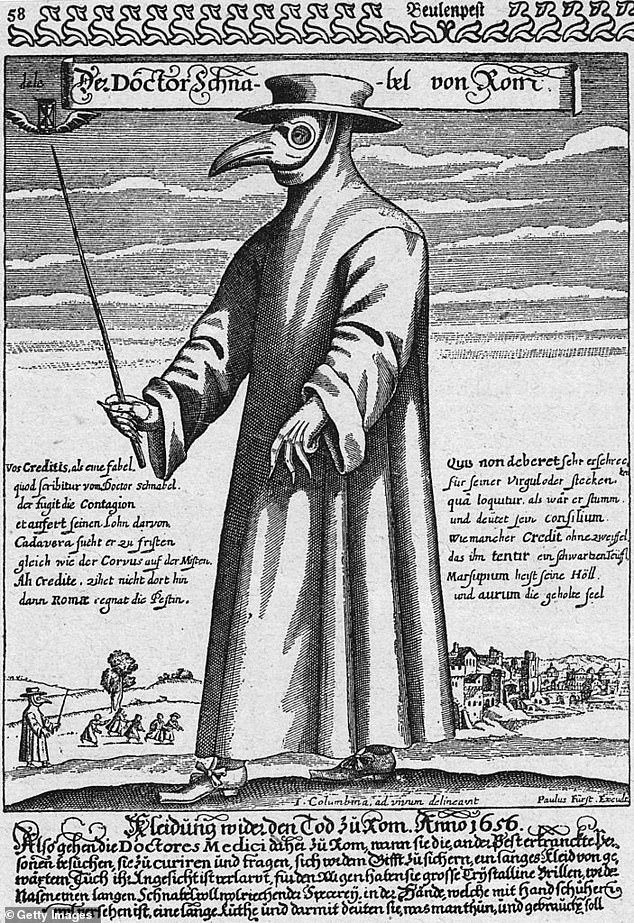Colorado is rocked by human case of deadly Medieval disease
Health authorities in Colorado have confirmed that a resident has contracted the bacterial infection that causes the plague.
This deadly medieval disease could cause patients to cough up blood and turn their skin black, hence the ominous nickname “Black Death.”
It is not known how the individual became infected, but the bacteria can be transmitted through contact with wild rodents and through the bites of infected fleas.
Last year, a Colorado resident contracted the disease from his cat. The U.S. only confirms seven cases of plague per year.
Symptoms of the plague are similar to those of the flu, including sudden fever, chills, severe headache and muscle pain, nausea and vomiting.
Plague is an infectious disease caused by the bacterium Yersinia pestis, which is transmitted by fleas and is spread between animals. The image above is a 3D illustration of the bacterium

The plague is usually spread through infected wild rodents and infected fleas, which can nest on the skin of pets
It can also lead to swollen lymph nodes, also called buboes, which can become inflamed and tender, and tissues such as the hands and feet can turn black.
If the disease is not treated, it can spread to the lungs and other organs, as well as the blood, which can be fatal.
A person with the plague, which can be transmitted from person to person through coughing or sneezing, can be treated with antibiotics.
Infections usually begin with wild rodents and infected fleas, which can nest on the skin of pets.
People become infected when they come into contact with infected animals or through respiratory droplets from a sick person.
While the source of the infection in Colorado is unknown, scientists have previously found samples of the bacteria living in squirrels in the state.
The plague has been rare in the United States since an outbreak in the 15th century, which killed large parts of the European population.
Recently, in February, an Oregon resident contracted the fatal disease from her cat. However, she was treated in the early stages of the disease and no further cases have been found in the region.
And in 2021, a 10-year-old girl in Colorado died from the disease, the first death there since 2015. The state reported 22 cases of the plague between 2005 and 2020.
According to Colorado Public Radio, four people died from the plague nationwide in 2015, including two from Colorado: an adult in Pueblo County and a teenager in Larimer County.
The plague is more common in the summer months, because the bacteria can multiply rapidly in high temperatures and higher humidity.
People also spend more time outdoors in the summer, increasing the chance that infected animals will transmit the bacteria to humans.
Pueblo County health officials say it is vital to eliminate potential rodent habitats around residential areas and recreation areas by clearing brush, rock piles, trash and wood piles.

An illustration from 1656: A plague doctor in protective clothing. The beak mask contained spices believed to purify the air, the magic wand was used to prevent patients from being touched
This reduces the places where rodents can hide and breed, thus minimizing the risk of exposure to fleas that transmit the plague bacteria.
They also advise people to avoid direct contact with dead animals. If necessary, they should use an insect repellent containing DEET to protect themselves from flea bites.
Using a long-handled shovel, place the animal in a sealable garbage bag and dispose of it in an outside trash bin as soon as possible.
To further prevent flea bites, it is recommended to apply a DEET-based insect repellent to bare skin and clothing, especially pants, socks, shoes, arms and legs.
Pets should not sleep in beds to minimize potential exposure to fleas. Regular flea treatment for pets is essential, while flea collars are not effective.
It is also important to keep pets away from areas where rodents are common, such as prairie dog colonies. Store their food in secure, rodent-proof containers to prevent contamination and subsequent exposure to pest bacteria.
These measures are essential to reduce the risk of bullying transmission and ensure community safety.
